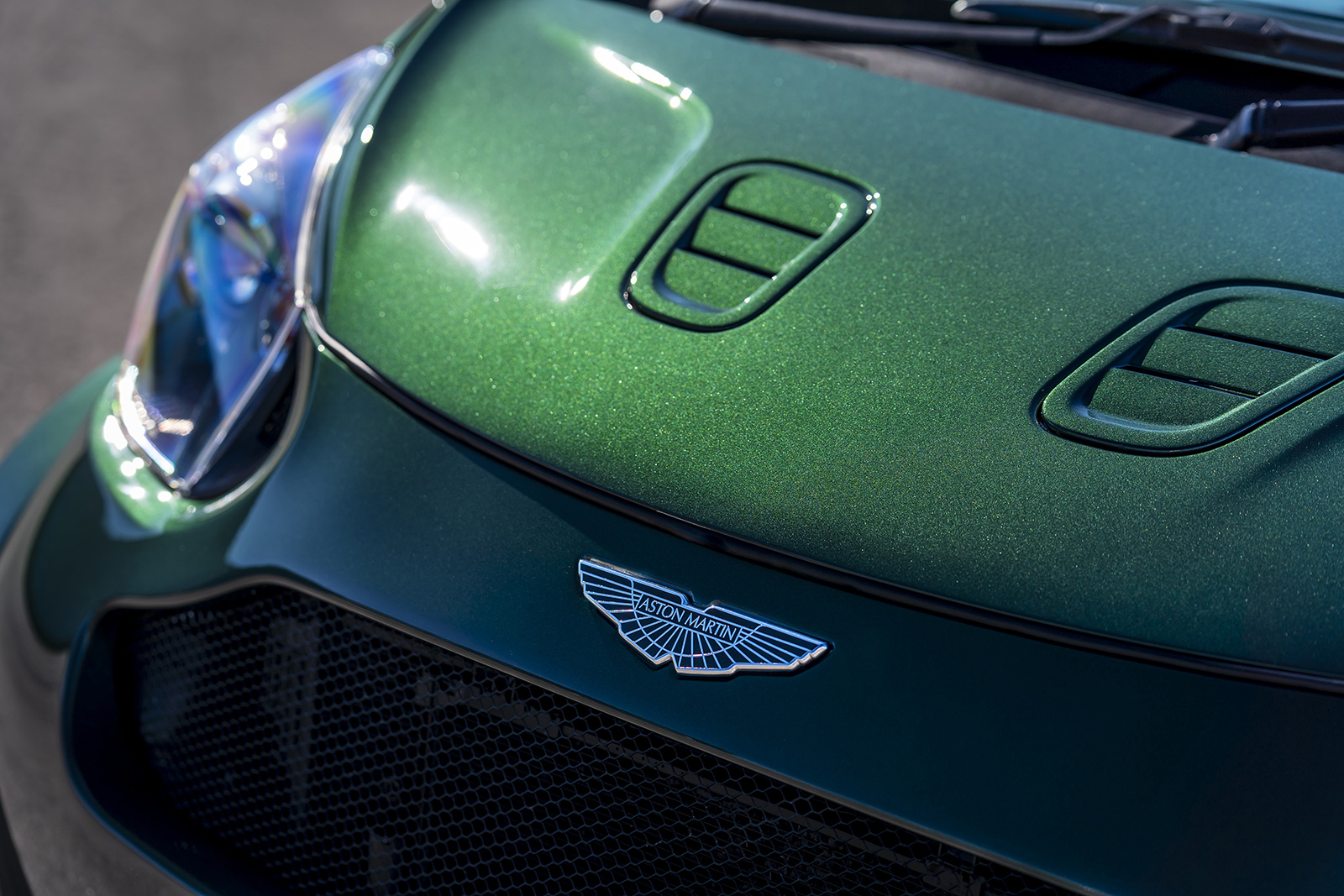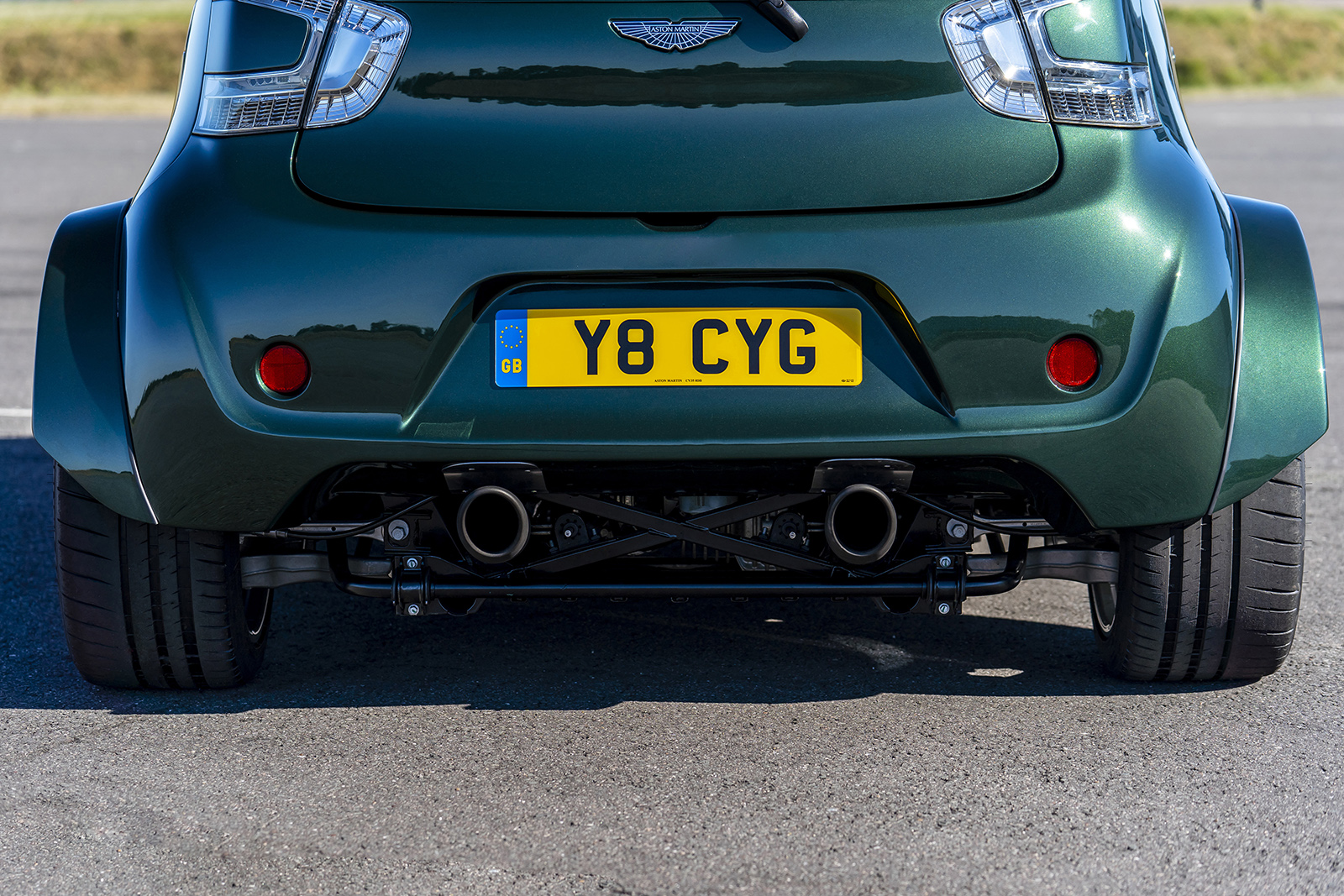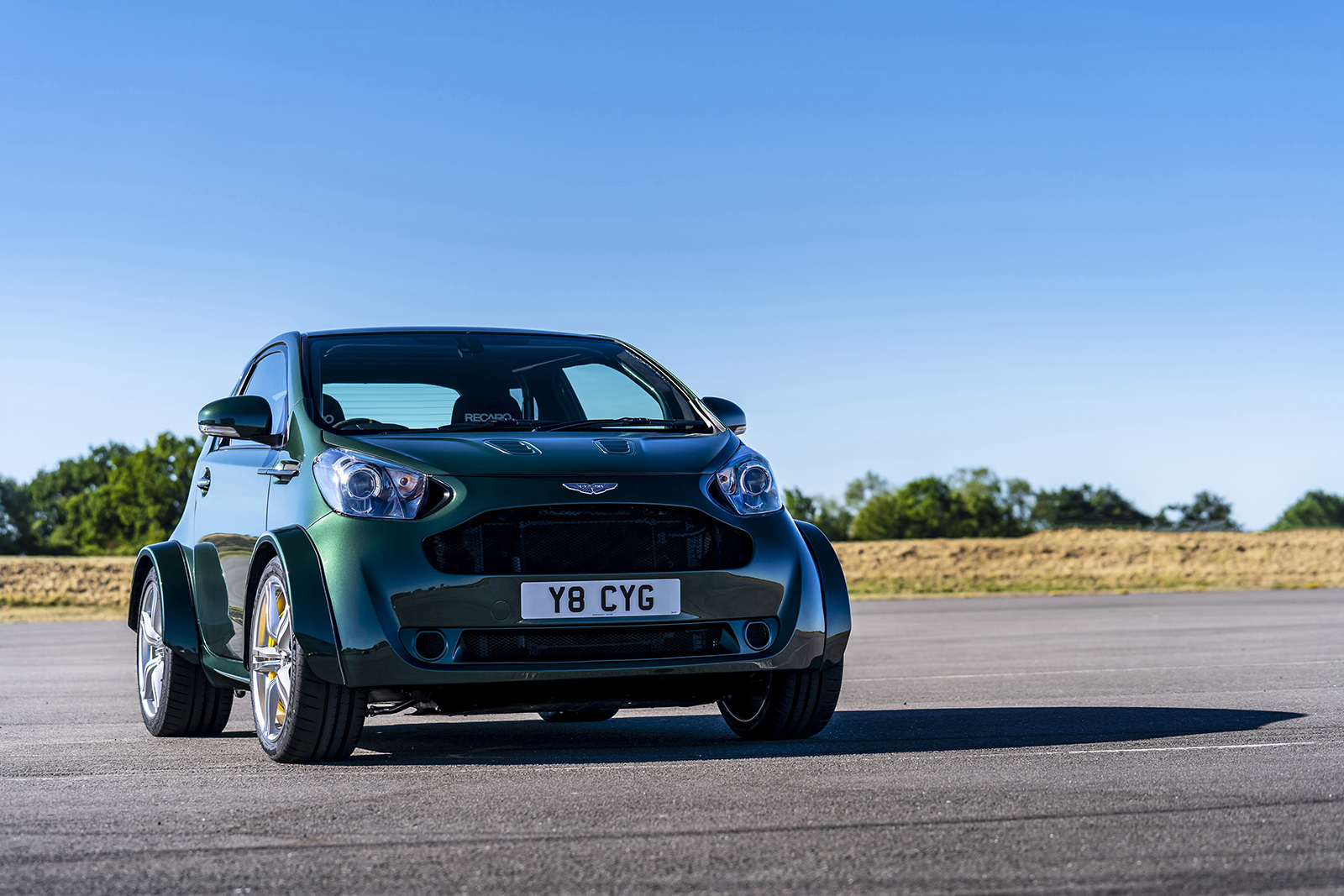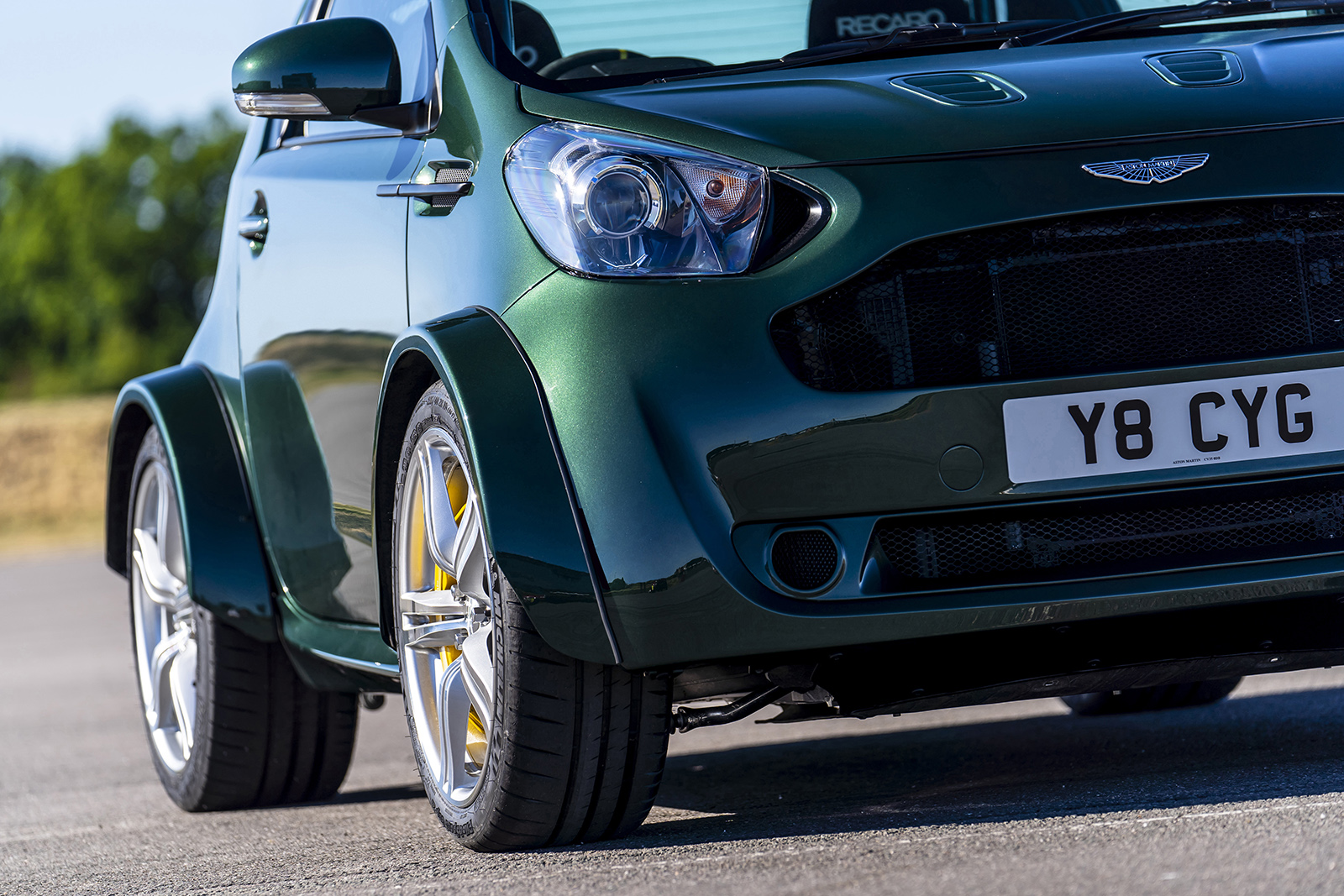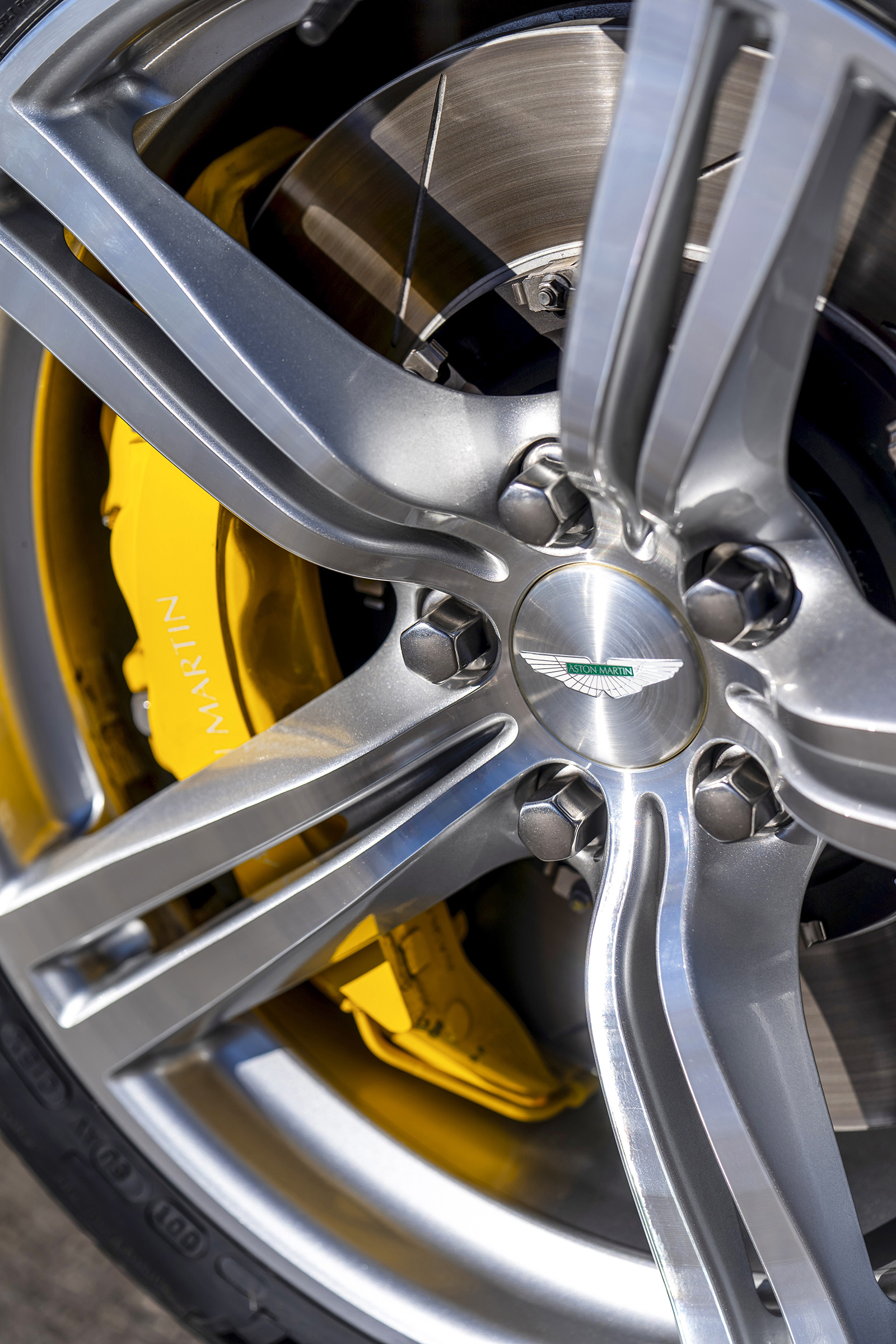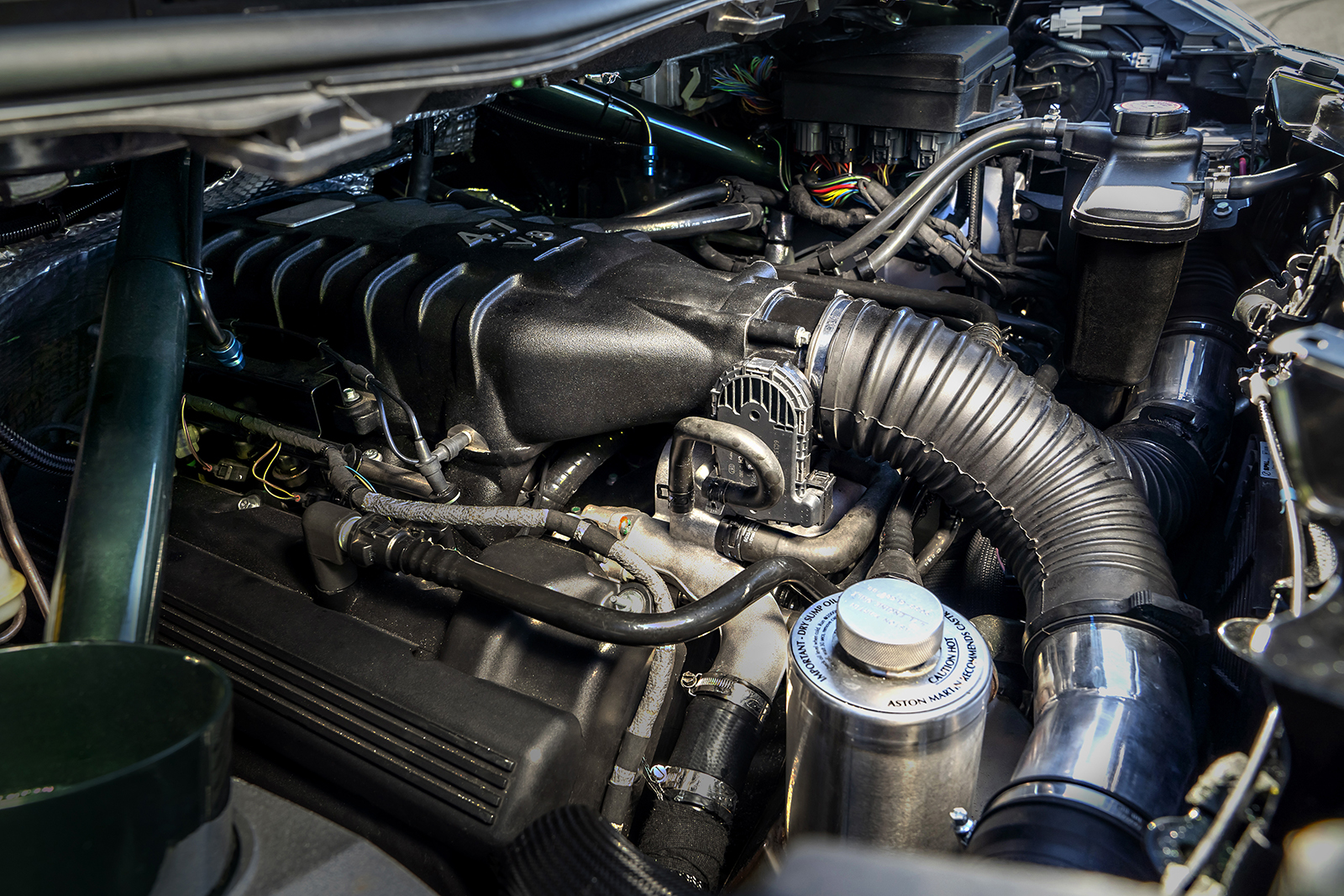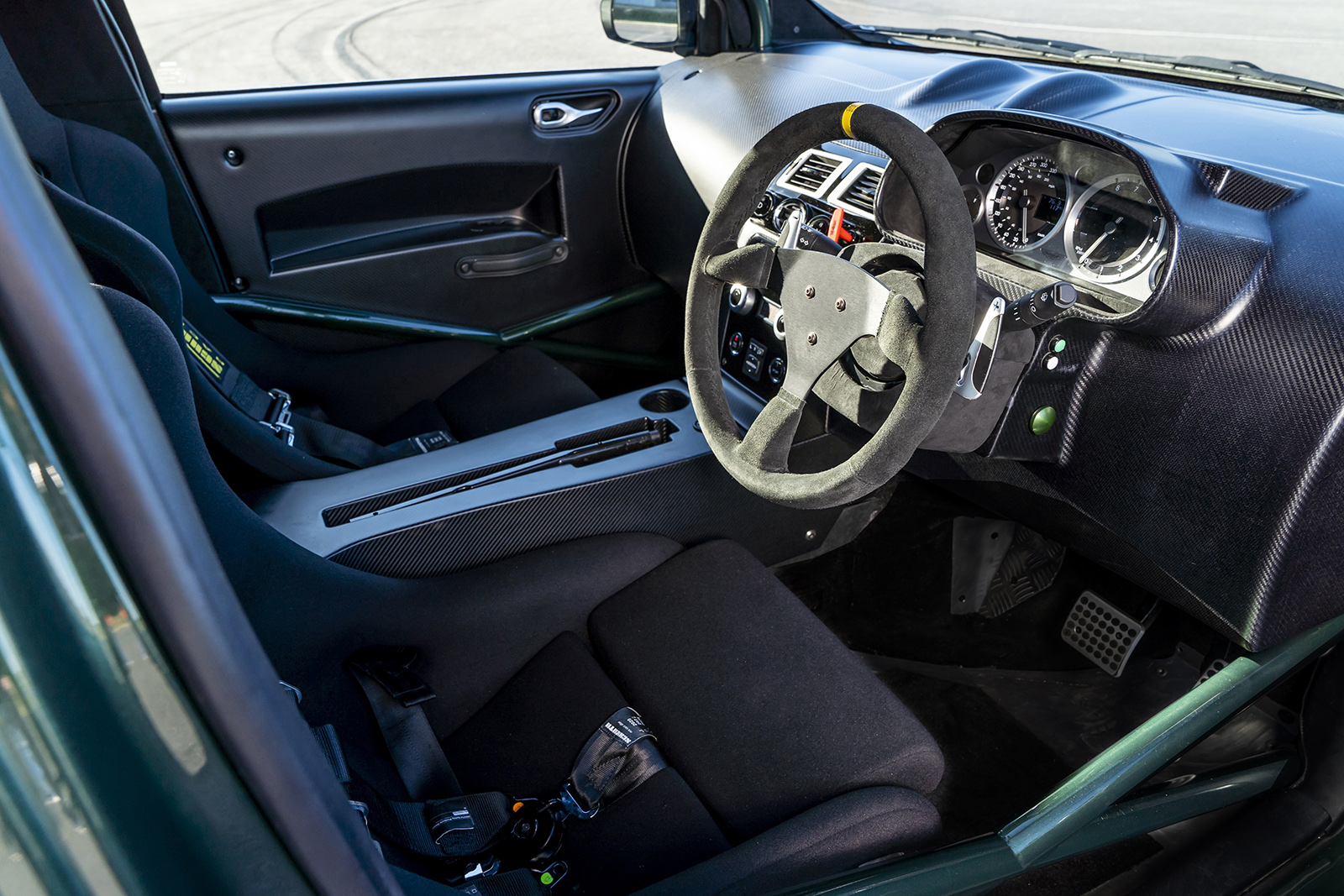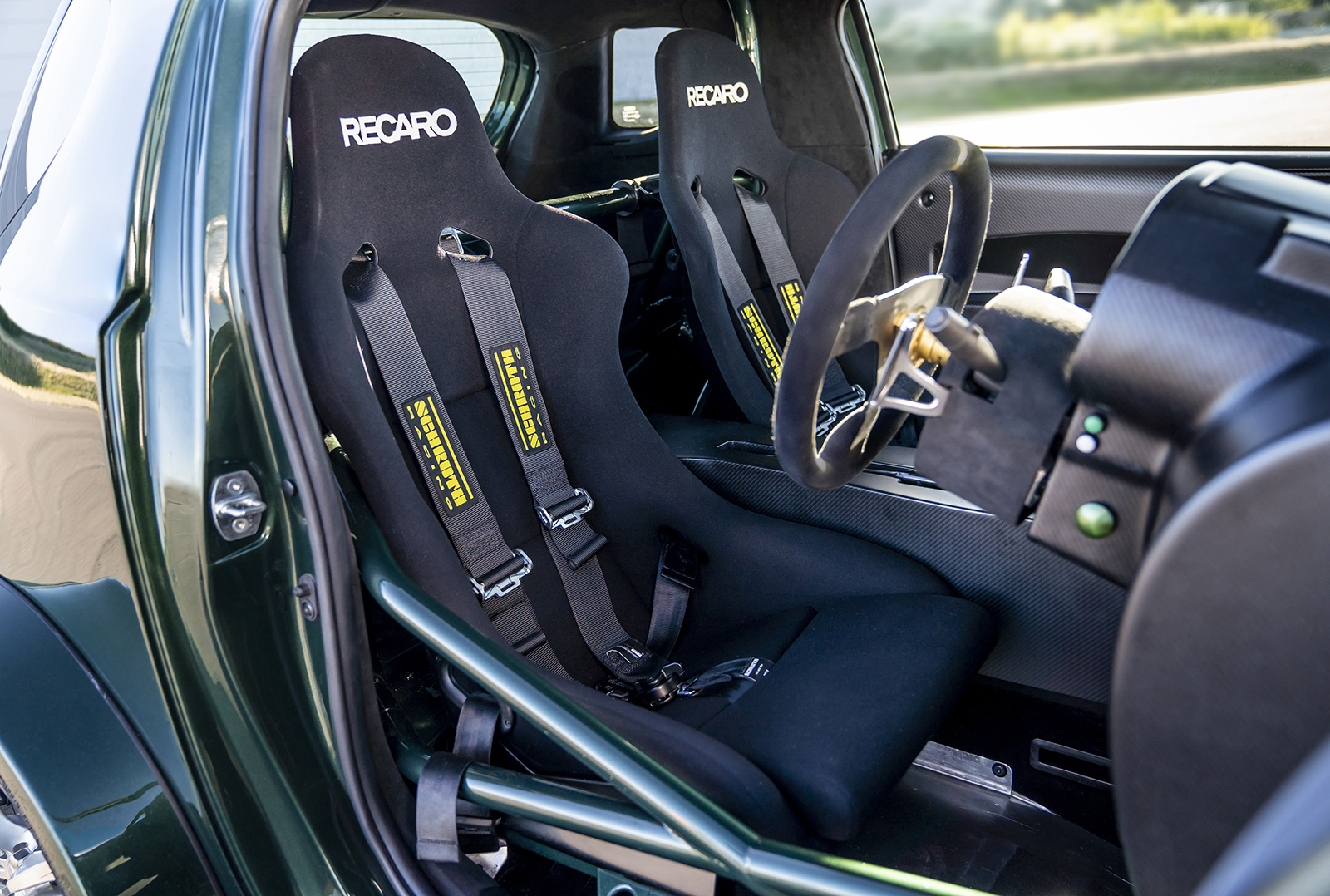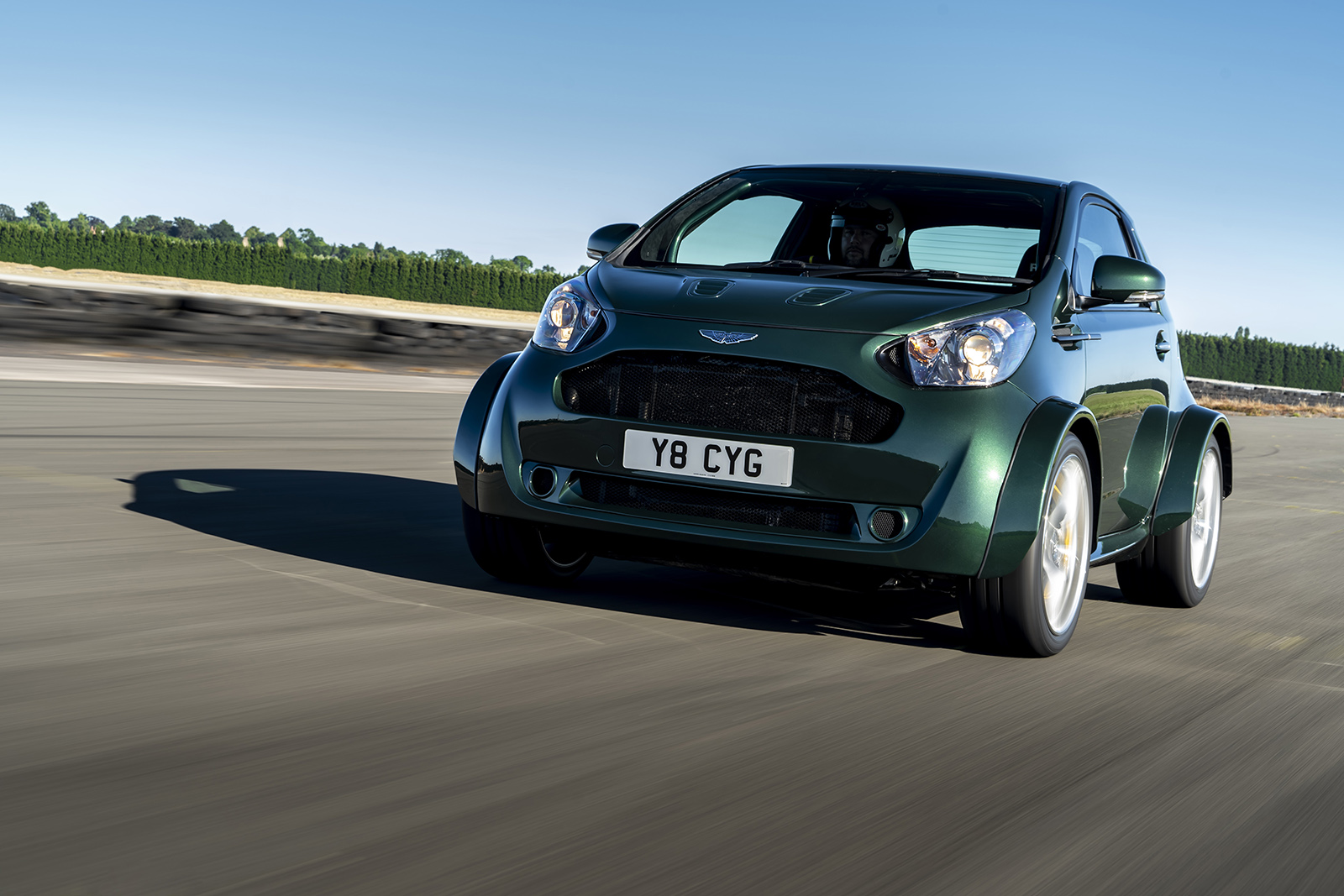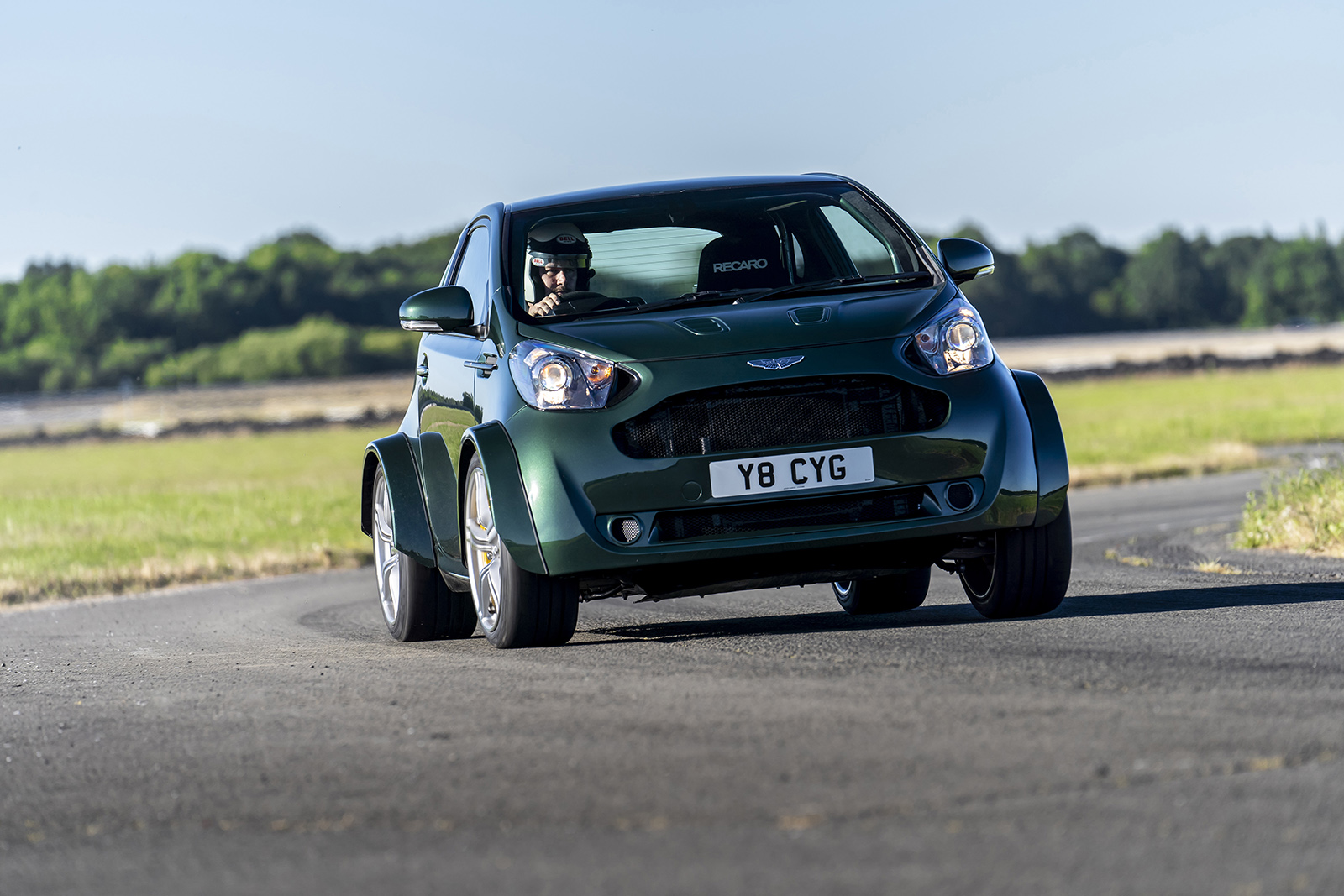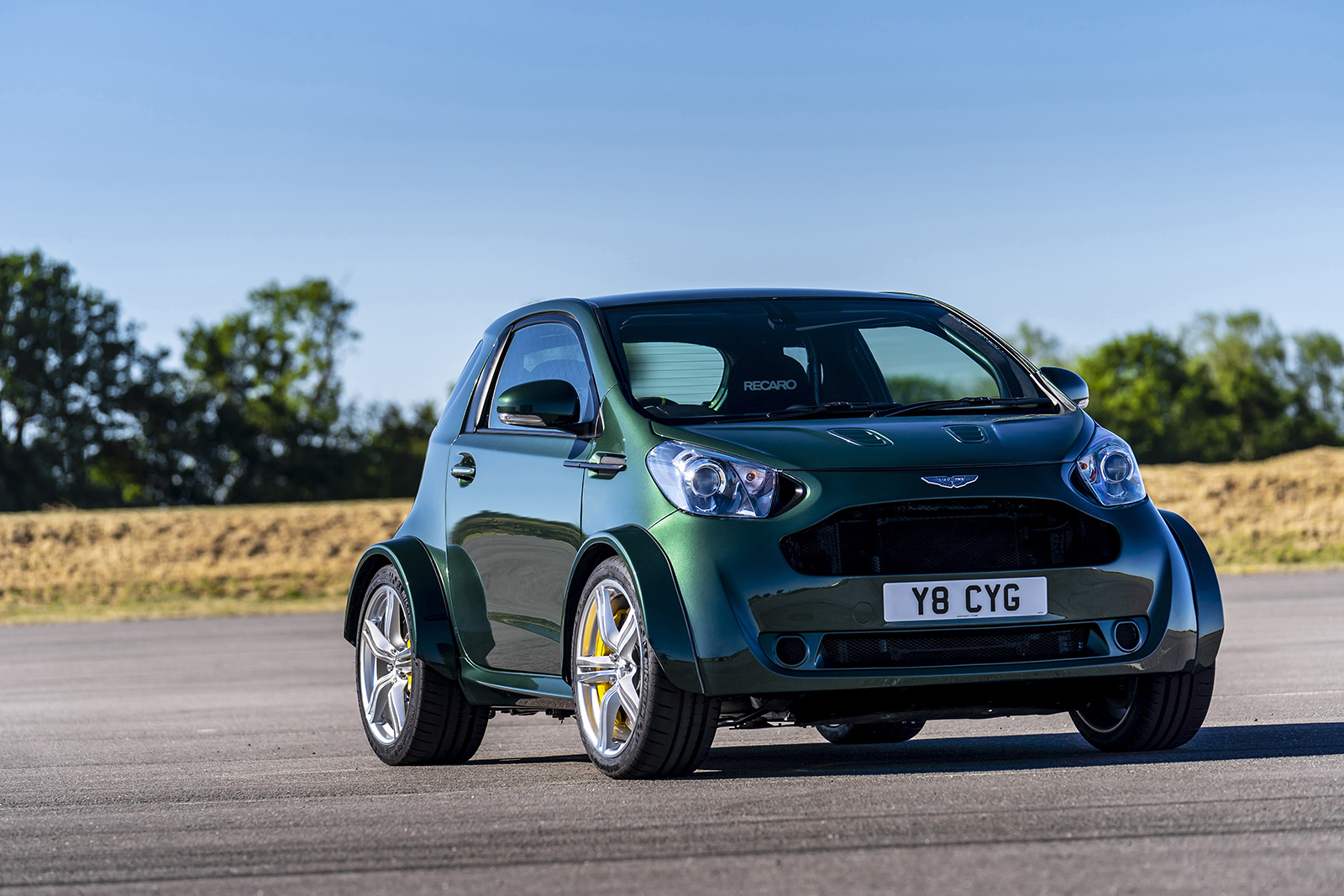Remember the Aston Martin Cygnet? We do, too. It’s been a few years since it was in production, with the last example arriving in 2013. But recently, at the world-famous Goodwood Festival of Speed in the United Kingdom, the Cygnet made a very triumphant return for a one-off showing, complete with a honkin’ V8 and a whole list of modifications.
Goodwood brings together car enthusiasts, industry buffs, and other famous figures in the world of motorsports to celebrate the sport of speed. It’s currently happening and will continue throughout this upcoming weekend. And to take advantage of the spotlight, Aston Martin debuted its one-off Cygnet V8 creation, commissioned for a special customer through its special order and customization division, “Q by Aston Martin.”
If your memory is currently evading you, the Cygnet was the oddball hatchback city car produced by Britain’s premiere luxury sports car maker. It was basically a rebadged and slightly reengineered Toyota iQ wrapped up in a fancy British suit. And it was by far the complete opposite of Aston Martin’s tradition for making high-dollar and incredibly fast luxury sports grand tourers.
The purpose of the Cygnet was to offset Aston Martin’s Corporate Average Fuel Economy rating, or CAFE. CAFE scores for automakers are based on the EPA-rated fuel economy figures of all the vehicles it sells, which gives each automaker an average CAFE score and rank. Aston Martin’s CAFE score was low, given that the firm only make high-performance luxury vehicles with gas-guzzling V8s and V12s. To offset this low score, it bought the rights to rebadge Toyota’s iQ, giving the firm a fuel-efficient vehicle to improve its CAFE score.
But being a rebadged Toyota, it didn’t quite score well with the market and left the automotive press a bit perplexed. So Aston Martin decided to try and alter everyone’s perception of the Cygnet by shoehorning a 4.7-liter V8 and seven-speed transmission under the hood for the viewing eyes of Goodwood and to celebrate the act of going fast for fun.
Instead of the puny Toyota-sourced gasoline four-cylinder in the normal Cygnet, this latest creation comes with the same arrangement as the V8 Vantage S, 430 horsepower and all. The result is a tiny city car that packs a huge amount of punch, particularly with a power-to-weight ratio of 313 horsepower per ton, which is more than a Mercedes-AMG GT-S Coupe.
To compensate for the extra power, since vehicles with extra short wheelbases don’t handle lots of oomph very well, engineers widened the axle track at both ends to give the Cygnet V8 more stability. Covering them up are specially designed and bespoke flared wheel arch extensions made of a lightweight carbon composite.
Making space for the V8 and its seven-speed Sportshift II transmission, engineers also widened the transmission tunnel and redesigned the front bulkhead. Weighing just 1,375 kilograms or 3,031 pounds, the Cygnet V8 takes only 4.2 seconds to hit 60 mph with a top run of over 170 mph.
It’s not just a stationary concept either as Aston Martin debuted the Cygnet V8 by running it up the famous hill climb course at Goodwood.
The modifications don’t stop under the hood as the Cygnet V8 also gains six-piston brake calipers up front and four-piston clamps at the rear to handle the extra speed. The interior has also been reworked with an FIA-compliant fire safety system, fixed Recaro bucket seats with four-point harnesses, a bespoke carbon dash and instrument cluster design, and more.
“The V8 Cygnet shows the fun side of both Aston Martin and its customers,” said David King, Aston Martin’s vice president for special operations. “It is also a fine example of the engineering talent within the company as it’s no small achievement to fit the Vantage’s V8 engine so harmoniously into the Cygnet’s compact body. I am sure that it will amaze and thrill people when they see and hear it on the hill at the Festival of Speed.”
